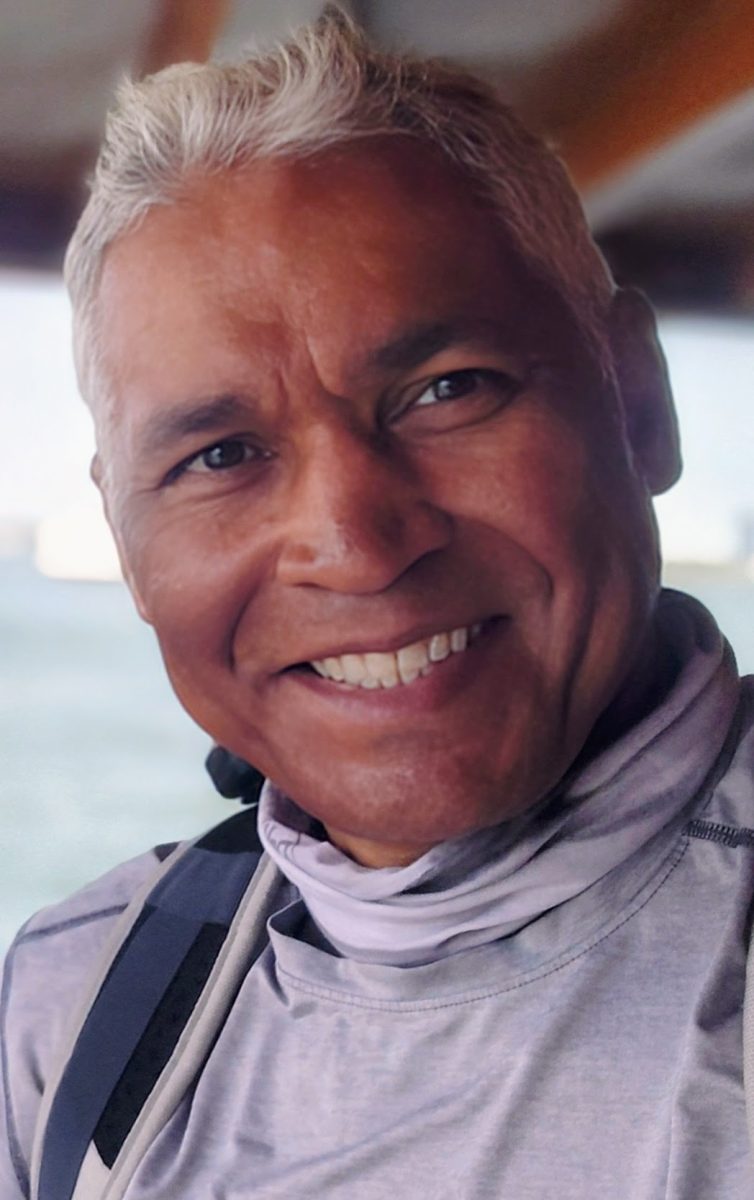Defining Journalism: Calling Moral and Ethical Standards into Question
Suppose there is a breaking news item, perhaps a national scandal or a weather emergency, that people really should know at that time. Let’s also suppose that the sole journalist with access to this information is considering embellishing the facts for their argument’s sake, adding opinions, or modifying their presentation of this news in some way for personal gain or promotion of their ideas. Is it better for them to present this pressing news with embellishments? Or for them to not present it at all? Is the truth completely, 100% the most important part of journalism in every situation?
Now, admittedly, this example is slightly extreme. However, the generally accepted ‘pillars of journalism’ are deeply flawed if they are intended to apply to all forms within the field. As journalism continues to expand, both in the journalist’s role in serving their audience and the formats and styles in which journalism presents itself in the digital age, it has become very clear to me that the definition of journalism is too broad and needs to be changed. Because journalism includes such a broad swath of types of media and types of storytelling, it is impossible to always prioritize the morals of objectivity and impartiality.
What are these pillars anyways? The critically acclaimed The Elements of Journalism by Bill Kovach and Tom Rosenstiel lists the very first pillar of journalism as: “Journalism’s first obligation is to the truth” (49). Throughout the introductory chapters, the authors use the terms news and journalism interchangeably. Another notable pillar that they name is: “Its practitioners must maintain an independence from those they cover” (142). In addition, the Society of Professional Journalists lists two of its major defining journalistic principles as “seek truth and report it” and “act independently.”
Both of these sources indicate a certain level of absolute truth and objectivity, as well as an obligation to refrain from intending to purposefully sway or persuade their readers in the name of acting independently, to which journalists are expected to adhere while practicing their craft. However, I believe that these core principles apply to only some forms of journalism, most notably, hard news reporting.
The evolution of journalism over the past century has caused all the media and content that now falls under the definition of journalism to expand beyond the rigid parameters to which journalists are encouraged to stick. The first flaw in this definition is that there are too many forms of writing and media to fit into one set of standards and morals. As a student in journalism class and the Editor-in-Chief for The Falcon, I can speak to this personally. The ways I have been taught how to approach different styles of writing have key differences. During our Hard News unit, one of the core rules of our final project was that it must include absolutely no opinions. The article was only allowed to have information from external sources covering all the relevant facts to a story. I now sit drafting my piece for the Opinion unit, ready to defend a subjective take vehemently, find evidence that supports exactly what I intend to argue, and respectfully acknowledge but shoot down counterarguments that conflict. These approaches are inherently different. Expanding beyond the rigidity of a hard news story promptly reveals the concept of multiple, varying, and perhaps clashing “truths.” For example, if one were to write a feature on a certain dish from a popular cuisine, three different chefs can have three recipes. All of these are true, none of them are wrong, and here’s the issue: they are remarkably different. They don’t fit under a “truth” that has the ability to be compared to other facts and name them as right or wrong.
William Safire, an author, speechwriter, and journalist, is referenced frequently throughout The Elements of Journalism. The book states, “Safire believed that opinion journalists had more liberty over other journalists to call things as they see them without the qualifiers of a straight reporter… ‘I like to think I helped launch a field called opinionated reporting’” (141).
Admittedly, Kovach and Rosenstiel also quote John Martin, a New York Times critic who claims, “I feel that my first responsibility is to tell what happened, and secondarily, to express my opinion, let’s say, or an interpretation” (144). However, I believe that Safire’s use of the phrase “launch a field” implies a concretely new entity. Opinionated journalism – whether that be reviews, personal features telling the story of a person’s life with a certain angle in mind, or political op-ed – is intrinsically different from hard news.
With the evolution of journalistic print, online media, photo, and video comes the evolution of a journalist’s role in serving the public. Kovach and Rosenstiel explain and emphasize the difference between the “old” and “new” journalist. Essentially, while the old journalist was solely responsible for serving the public only the facts relating to a certain story, the new journalist is responsible for helping the reader interpret the content. I am of the belief that inserting an interpretation bends the standards of objective journalism too far.
That said, the writers of The Elements of Journalism reference American author and commentator Maggie Gallagher who says, “My basic belief [is] that there is some relationship between journalism and one’s perception of the truth” (146), implying that some sort of personally perceptive interpretation is impossible to ignore.
They also reference Bill Keller of the New York Times, who addresses the relationship between absolute truth and the role of a journalist: “Whether true objectivity is ever possible – I don’t think that’s what we’re here for. We strive for coverage that aims as much as possible to present the reader with enough information to make up his or her own mind” (56). Keller’s approach maintains the essence of journalistic purpose while still leaving some freedoms to the reader.
Political journalism ignites an entirely different conversation. The writers of The Elements of Journalism claim that “journalism of opinion, be it in the column of conservative or liberal, is not fundamentally about reporting the news but about making sense of it” (155). However, due to this separation between the new and old journalist (and with new journalism being further nuanced and interpretive), political journalism is often so deeply partisan that it becomes simply argumentative.
Take, for example, the image many of us have seen before, the “media bias chart:”
This chart illustrates where news sources stand in terms of left or right on the political spectrum and how much “news value and reliability” they generally have. This openly admits that, in the political world, some news sources are less committed to providing truthful information to their consumers than others. Notably, the sources closer to the middle of the political spectrum are significantly higher on the reliability scale, and the sources further to either political extreme are much lower. Journalists with strong political opinions or obligations that show in their work are not delivering the news to their readers. They are focused on delivering persuasive opinions and interpretations of it.
Essentially, the relationship between politics and journalism can never really be objective. Reporting is dependent on the bias and perspective of the writer or source. In The Elements of Journalism, Kovach and Rosenstiel explain the following:
“As a rule, politicians are far less interested in what any journalist might actually contribute to a speech… and far more interested in making the journalist imagine that his or her rhetorical and intellectual powers are so magical that the journalist just had to be consulted. Often these negotiations are far more likely attempts to ensure good press than to elicit whatever a journalist has to contribute” (152).
In addition to having their own political motives, journalists in the field of politics can easily be manipulated by politicians or candidates who are allowed, and in fact, must be overly opinionated and pressured for political change that aligns with their views.
Another aspect of political journalism is the field of journalistic commentating. The authors explain, “[Commentators’] currency is emotional mobilization more than ideas. Much of their conversation focuses on the wrongness of the other side or the anticipation that there lies trouble ahead for the obviously misguided opponent” (155). Think about the press coverage immediately following last year’s presidential debates between President Donald Trump and President Joe Biden. Following September’s debate, CNN commentator Jake Tapper specifically describes Trump’s behavior as: “That was a hot mess inside a dumpster-fire inside a train wreck.” However, Fox News covered the story in a different way, describing it as an equal argument between both candidates in which they “both got nasty.”
Referring back to the principles of truth and independence from the reader that are supposedly the strong core values of this craft, I simply do not agree that bashing one’s opponent falls under this category. The purpose of these political practices is to persuade a reader of one’s view and is certainly not news.
However, there is something to be said for people with different areas of expertise, and how the combination of knowledge across fields, like journalism and politics, is sometimes very valuable. The authors reference Safire, who transitioned into journalism after years of political speechwriting: “Safire also believed his expertise in politics helped inform his second career as a journalist. He believed just as clearly that this transformation was not a one that could not be repeated” (141).
The Medici Effect, written by Swedish American entrepreneur Frans Johansen, brings this idea to a broader scale. In this book, he explains how “breakthrough ideas most often occur when we bring concepts from one field into a new, unfamiliar territory.” Johansen uses a Brown University experiment on the neuroscience of monkeys to prove that “the intersection of these diverse fields (referencing math, medicine, computer science, etc.) [is what helps] achieve the breakthrough ideas that will push discoveries forward” (13). This concept can easily be applied outside of neuroscientific experimentation, in the case of Safire’s success due to the intersection of politics and journalism. That said, though interdisciplinary expertise is often extremely valuable, the relationship between journalism and politics remains flawed, biased, and in need of serious renovation if commentating and political journalism still intends to fall under the field’s defining principles. There are too many instances of aggressively opinionated journalism that strays away from its loyalty to the truth in the name of political persuasion.
Kovach and Rosenstiel reference journalist George Will, who believed that “the morality or ethics of journalism was subjective and invalid” (151). In the way that they are applied now, I agree. When critically acclaimed sources are promoting loyalty to truth and objectivity, and independence from the reader, the categories of journalism that I have discussed, along with many others, do not fit this definition. There are too many approaches to writing, media formats, political journalism, and journalists’ duties to their readers to all fit under one definition. In the future, I believe that this definition needs substantial reworking. The first practical step I see is separating hard news journalism from all other forms. This is the only form that can be completely objective, fact-based, and, to the highest possible extent, bias-free. All other formats focus more on serving readers in whatever form it may be, whether that is interpreting hard news, crafting political opinions, capturing someone’s emotional life story in a profile feature, or researching the different culinary techniques that chefs use to make chicken parm. In no way am I saying that these are not valuable; I am saying that they are not even the same cannon. Journalism is a broad term – in order to make this craft even more powerful and distinct in human society than it is currently, it needs serious re-defining.






























Mark Schneider • Jan 18, 2022 at 11:56 AM
Well researched, beautifully written, persuasive argument. I wonder, is this article on journalism, journalism?